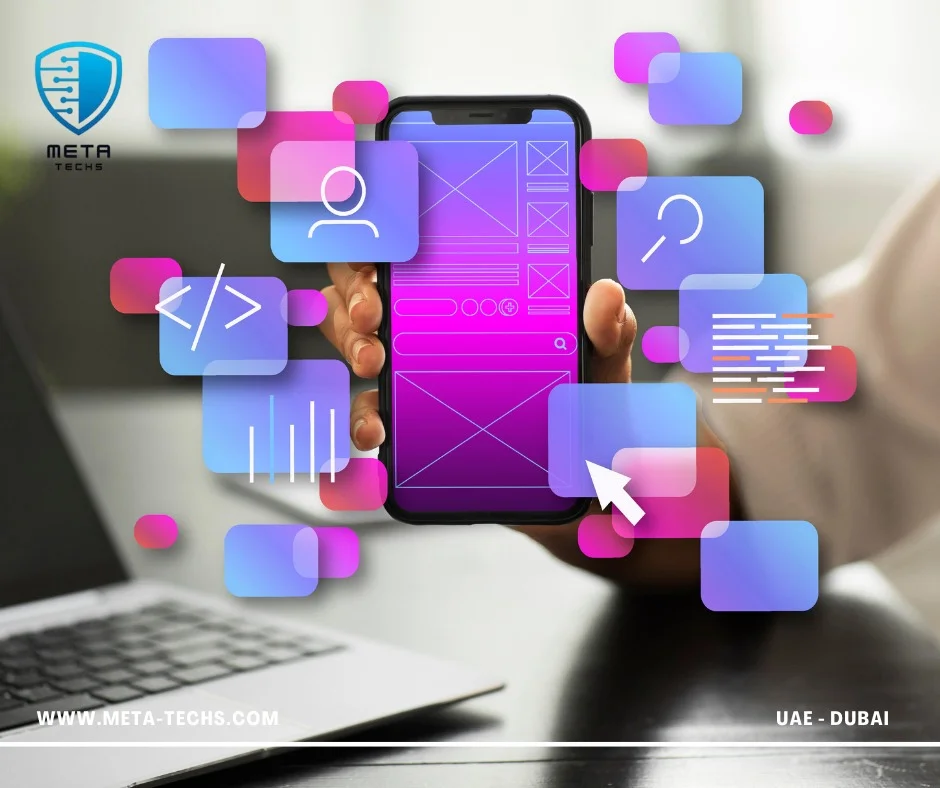Mobile App Security Threats has opened up a myriad of possibilities and conveniences for users worldwide. However, as the usage of mobile applications surges, so does the risk of potential security threats. Hackers are becoming increasingly sophisticated, exploiting vulnerabilities in mobile applications to access sensitive data. This makes understanding and mitigating mobile application threats a priority for both app developers and users.

Defining Mobile Application Threat
A mobile application threat, in its simplest form, is a potential risk that could exploit the vulnerabilities of a mobile application. These threats could compromise the security of the app, leading to unauthorized access to sensitive data, disruption of app functionality, or even control takeover of the user’s device.
the Concept of Threat in Application Security
In the context of application security, a threat is any potential danger that could exploit a weakness (vulnerability) in a system, leading to unwanted incidents. These incidents may range from unauthorized access, data breaches, loss of data, and disruption of services, to name a few. Understanding threats is a crucial part of application security as it aids in the development of effective defense mechanisms.
Top 10 Mobile App Threats
- Malware: Malicious software, or malware, is one of the most common Mobile App Security Threats. It can infiltrate your device through infected apps and compromise your data, steal personal information, or even take control of your device.
- Data Leakage: Mobile apps often require access to sensitive data, such as contacts, location, or camera. However, if not properly secured, these apps can leak this data to unauthorized third parties, leading to privacy breaches.
- Insecure Data Storage: Mobile apps store various types of data, including login credentials and personal information. If this data is not securely stored, it can be easily accessed or manipulated by attackers.
- Man-In-The-Middle Attacks: In these attacks, hackers intercept the communication between the mobile app and the server, allowing them to eavesdrop, alter, or steal data.
- Phishing: Phishing attacks target users through fake or malicious apps, tricking them into revealing their sensitive information, such as passwords or credit card details.
- Unsecured Wi-Fi Networks: When connecting to public Wi-Fi networks, your mobile app data can be vulnerable to interception by attackers. They can easily capture your data packets and gain unauthorized access to your device.
- Unauthorized Access: Mobile apps often require login credentials for access. If these credentials are weak or easily guessable, attackers can gain unauthorized access to your accounts and compromise your data.
- App Spoofing: Attackers can create malicious apps that mimic legitimate ones, tricking users into downloading and using them. These spoofed apps can then steal data or perform malicious actions.
- Rooting/Jailbreaking: Rooting or jailbreaking your device can expose it to various Mobile App Security Threats. It removes the device’s built-in security measures, making it more susceptible to malware and unauthorized access.
- Outdated Software: Using outdated mobile apps can expose your device to security vulnerabilities. Attackers can exploit these vulnerabilities to gain access to your data or control your device.
Common Types of Mobile App Security Threats
Mobile app security threats come in various forms, and it’s crucial to be aware of them to safeguard your data. One common type of threat is malware, which can infiltrate your device through malicious apps or links. Malware can steal personal information, track your activities, or even take control of your device. Another prevalent threat is phishing, where attackers trick users into sharing sensitive information by posing as a trustworthy entity. Phishing attacks often occur through fake app notifications or emails.
Additionally, insecure data storage is a significant concern. Some apps store user data in an unencrypted format, making it susceptible to unauthorized access. Man-in-the-middle attacks are another threat, where attackers intercept communication between the app and the server, gaining access to sensitive information. Finally, insecure coding practices can lead to vulnerabilities that can be exploited by hackers.
Best Practices for Protecting Your Data
To mitigate Mobile App Security Threats and protect your data, it is essential to follow best practices. Regular updates and patches are critical, as they often include security fixes for known vulnerabilities. Keeping your apps and devices up-to-date ensures that you have the latest security measures in place. Additionally, you should only download apps from trusted sources, such as official app stores, and carefully review app permissions before installation.
Data encryption and secure storage are vital for protecting sensitive information. App developers should implement robust encryption algorithms to secure data both at rest and in transit. Passwords and authentication mechanisms should also be strengthened to prevent unauthorized access. Furthermore, app users should enable device lock features, such as PINs or biometric authentication, to add an extra layer of security.
learn more about: What is Data Protection?
Data Encryption and Secure Storage
Data encryption and secure storage are essential components of mobile app security. Encryption is the process of converting data into a format that is unreadable to unauthorized parties. App developers should implement strong encryption algorithms to protect sensitive data both at rest and in transit. Encryption ensures that even if an attacker gains access to the data, they won’t be able to decipher its contents.
Secure storage involves storing data in a protected environment, such as a secure server or a trusted cloud service. App developers should adhere to industry best practices for secure storage, such as using secure protocols and enforcing access controls. By implementing data encryption and secure storage practices, app developers can significantly reduce the risk of data breaches and unauthorized access.
Mobile App Security Testing and Auditing
To ensure the security of mobile apps, thorough testing and auditing are crucial. App developers should conduct rigorous security testing during the development process to identify and address vulnerabilities. This includes conducting penetration testing, code review, and vulnerability scanning. Testing should cover various scenarios, including user input validation, session management, and data storage.
Furthermore, regular security audits should be conducted to assess the effectiveness of existing security measures and identify areas for improvement. Audits can include reviewing access controls, monitoring logs for suspicious activities, and evaluating compliance with security standards. By continuously testing and auditing mobile apps, developers can proactively identify and address security issues, minimizing the risk of security breaches.
What are two of the mobile app security risks?
Answer: Two of the most common Mobile App Security Threats include malware attacks and data leakage. Malware attacks occur when malicious software is installed on a user’s device, often through malicious apps, downloads or infected websites. Data leakage, on the other hand, occurs when an app unintentionally exposes sensitive data, often due to poor security measures or design flaws.
What is mobile application threat?
Answer: A Mobile App Security Threats is a potential risk or vulnerability that could exploit the weaknesses of a mobile application. These threats could compromise the security of the app, leading to unauthorized access to sensitive data, disruption of app functionality, or even control takeover of the user’s device.
Data Protection with Meta Techs
Continuous data protection requires robust storage technology to ensure efficient data backup and recovery. Meta Techs offers data protection solutions that facilitate easy deployment, scalability, and instant access to Petabyte-scale data.
Meta Techs‘s storage appliances are designed to handle high-speed backup and restore operations with parallel data transfer. With Meta Techs, organizations can achieve rapid data recovery, ensuring minimal downtime in the event of data loss or system failures.
To learn more about continuous data protection solutions with Meta Techs and how it can enhance your organization’s data resilience, visit our Meta Techs website or explore their resources on data protection best practices.








